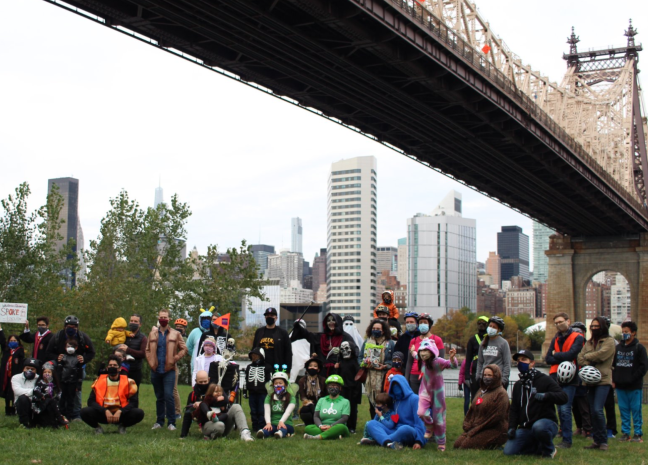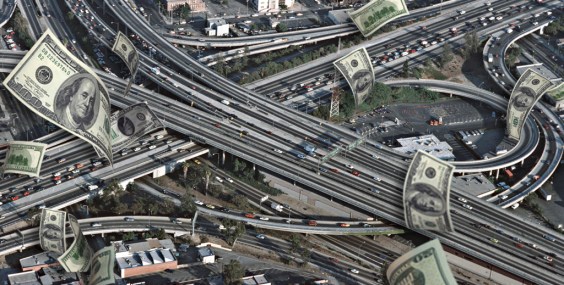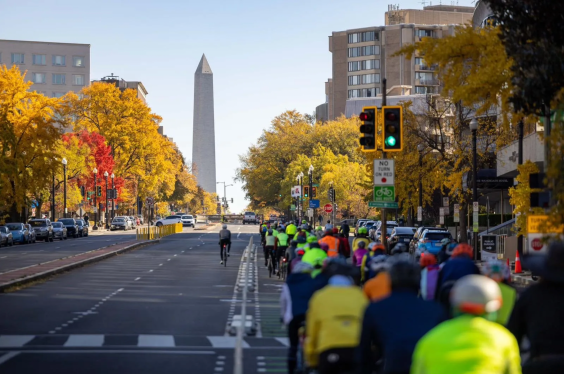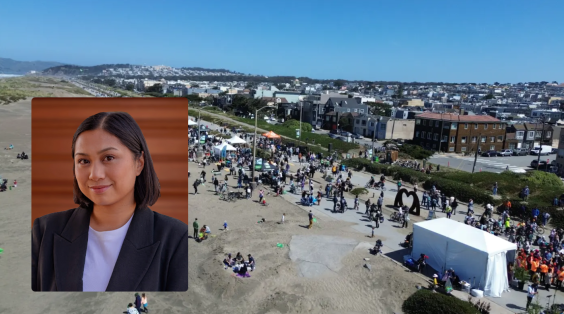In late September, the city broke ground on the first ever “bike boulevard” on 39th Avenue in Sunnyside and Woodside, Queens. Elsewhere in the five boroughs, the Department of Transportation finished the long-delayed, final phase of Queens Boulevard and the dedicated bike lane on the Brooklyn Bridge. The East Queens Bikeway will soon be underway, as are school-safety improvements in Morrisania in the Bronx; a redesign of Fifth Avenue in Manhattan, Emmons Avenue in Sheepshead Bay; Meeker Avenue in Williamsburg;, and soon, a pedestrian-only path on the South Outer Roadway on the Queensboro Bridge, which will clear the North Outer Roadway for cycling.
Each development came about because of the determined activism of New Yorkers, sometimes under the banner of Transportation Alternatives. Those activists should take victory lap — in the form of an organized community and family bike ride, inclusive of all ages and abilities. Community bike rides are fun, relatively easy, and popular. They’re also a great way to organize your community to support safe streets. They’re how I “accidentally” got involved in what became some large and marvelous changes in our city!
We came to Sunnyside in 2010 to raise a family, drawn to the neighborhood feel, amenities like a dry cleaner, markets, and restaurants. Soon we had a daughter — and a problem: How to get our precious cargo to her pre-school (and me to work on time)? One day, as my daughter lay sprawled on the sidewalk in toddler meltdown, I decided that the best way to get her to school was to make it fun: on the back of a bicycle. We soon had fun timing the journey, ringing our bell at people we knew. I, meanwhile, would lock up and catch the train at Queens Plaza for my commute downtown — a healthy, efficient routine.
Then in 2017, I got an email from a friend who was distributing a petition for Gelasio Reyes, a deliverista who was killed by truck driver near 43rd Avenue and 39th Street, on the edge of Long Island City. The petition called for the support of “protected bike lanes” on 43rd Avenue and its parallel corridor, Skillman Avenue. The corridors feature two public schools, the Woodside public library, a myriad of businesses, and the tree-lined streets of Sunnyside Gardens, a landmark of 20th-century urban innovation. The community uses the avenues for shopping, dining, houses of worship, a thriving year-round farmer’s market, and the area’s signature civic center, Lou Lodati Park. The amenity would pass right under my kitchen window. I signed it, of course, but mostly forgot about it. I did not yet think of myself as an “activist.”
Opposition to the plan massed, immediately, of course — a saga that gripped the area for six tedious months and galvanized my determination to support the project. Finally, in July 2018, Mayor de Blasio approved the parking-protected bike lanes on Skillman and 43rd avenues — a breakthrough hailed by safe-streets advocates citywide.
Pro-bike-lane organizers needed to put a stamp on a win — so they tapped me, a “bike dad” with good people skills. Enter the Sunnyside Family Fun Bike Ride. With fellow volunteers Evan O’Neil, and Crista Guiliani, we met at the venerable Flynn’s Garden Inn on Skillman to plan a community bike ride in Sunnyside. The goal: a celebration!
Here’s @alanbaglia getting us ready to ride! pic.twitter.com/Cq0B4vfidn
— Rich Mintz (@richmintz) October 12, 2019
A low-key October 2020 Halloween ride brought together Sunnyside and Astoria families in Queensbridge Park under the dramatic Queensboro Bridge. Families from the two neighborhoods arrived by bike on protected bike lanes or greenways. City Council candidates politicked. We shared candy, showed off our costumes, and shouted, “No more spooky streets!”
Anyone is capable of organizing rides but, like for any event, it’s important to establish a proper host. As a Sunnyside resident, I welcomed folks from neighboring communities, and treated them like they were guests in my home.
Some vital components:
- Giveaways are fun. It’s also a good idea to “brand” your event, and stickers are relatively cheap to produce. All kids seem to love stickers. Parents like that the kids are “getting” something. Juice boxes are always a winner. Where possible, feeding people is popular!
- Create a simple name and color scheme. Social media is your best friend, but don’t flood the feeds. Tease it out early, and then post relentlessly in the two or three days before the event.
- A rain date is crucial. You can schedule your event on a Saturday, with Sunday the rain date. Or schedule the event on a Sunday, with the rain date the following Sunday.
- Safety is paramount. A call for ride marshalls usually yields a group of experienced and devoted people that are tasked with “corking” streets and supervising safe passage through high conflict areas. Here again, parents love to see it. As a host, point out who these folks are at the beginning of the ride.
- Also crucial are some devoted volunteers to trail the ride. Tweens tend to take off and pedal their hearts out, but smaller kids will be left behind. A “caboose” for the ride will make sure the slow participants (and their nervous parents) are not left on their own.
- Tidy phrasings and call-outs are important in your social-media comms, in a press release, and in pre-ride gathering, such as: “All riders must have a bicycle in good working condition and children under the age of 14-years-old are required to bring and wear a helmet. Gloves are also recommended. Runners, scooters, skateboards and similar mobility are welcome.”
Helping to create spaces for people to travel, wander, and socialize outside of a car, and at one with their community, was the hallmark of my 20-plus years in New York. Some efforts, like Skillman Avenue, have proved wildly successful.
Later, as a co-founder of Sunnyside Woodside Open Streets, we pushed the envelope, starting conversations on the broader use of public space. Not everyone agreed, but the conversation was the point. Thanks to SWOS, the roadway in front of Lou Lodati Park was reduced to a single travel lane from 8 a.m. to 8 p.m. The DOT’s nurturing of our 39th Avenue Open Streets led to the concept of a bike boulevard in Sunnyside. Traffic patterns and motorists’ speeds are being slowed. That happened because of a lot of effort, organizing, socializing, and tenacity.
The 39th Avenue Bike Boulevard is new, and it will take time to find its place in the community. But it will persist. With organizing, someday the safer-road treatments will find their way into other parts of Western Queens: to Blissville, throughout Dutch Kills, along the Honeywell Street bridge, and with any luck, up to 57th Street and the roads leading to and from PS361Q, The Woodside Community School. One day, perhaps, the same treatments will connect Sunnyside to Woodside to a permanent “34th Avenue Linear Park” in Jackson Heights. None of this happens without ideas, conversations, and advocacy. All of this can happen because it is vital to restoring the idea of walkable communities and safer streets.
Alan Baglia lived in New York City from 1998-2021, including 11 years in Woodside, Queens. He and his family recently moved to a no-through-traffic street in Connecticut.






